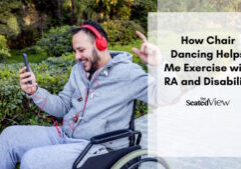Why Does It Take So Long To Get A Diagnosis Of RA?

One of the biggest struggles to effectively treat rheumatoid arthritis (RA) is the delay in diagnosis. In the very recent past, just 20 years ago, the time from the appearance of first symptoms to diagnosis range from a few months to more than 10 years. Thankfully, that has improved more, although the average is still about a year. While you go from doctor to doctor in search of answers, RA rages on, often causing permanent damage to your body. But why is it so hard to diagnose RA? In this post, I’ll take a look at the different factors that affect a quick diagnosis and what you can do to speed up the process.
Why it’s important to get an early RA diagnosis
Many rheumatologists consider RA a medical emergency — there’s no time to waste. The faster you get a diagnosis, the faster you can start aggressive treatment to prevent damage to joints and organs. Medication is still the best option to achieve remission and the earlier you start, the greater your chance of getting there. The field of rheumatology talks about an early window of opportunity in which there is an optimal response to treatment — this window is generally considered three months after the first appearance of symptoms.
Unfortunately, both RA itself and the healthcare system can get in the way. Let’s take a look at the reasons.
RA is complicated
RA is a pretty diva condition, as are many autoimmune diseases. Refusing to be “basic,” — especially in the beginning — it can come and go, leaving you at a doctor’s appointment showing off perfectly normal-looking hands, which looked like swollen oven mitts the week before. It may also jump from joint to joint or start in an area that’s not well-known as being possible RA (for instance, inflammation in your eyes, vocal cords, or skin), or appear primarily as systemic symptoms, such as low-grade fevers and feeling awful, but without the more well-known joint swelling.
Lack of medical knowledge
Your first point of contact is your family doctor, who is a generalist. Thiey know little about a lot of different things, including when to refer to a specialist. If you present with symptoms that look like RA, the first step is to order blood tests. If the test for rheumatoid factor is negative, they may not know that you can still have RA. Seronegative RA happens when the traditionally-ordered rheumatoid factor is negative and affects about 30 percent of people with RA.

Sexism
Medical sexism is well documented, creating a healthcare system that is predisposed to pat women on the head and send them home with antidepressants and a suggestion to try yoga (a.k.a “it’s all in your head”). Autoimmune diseases affect women much more often than men and when you combine that with symptoms that are initially often notoriously vague with that tendency to dismiss women, you end up with a lot of undiagnosed autoimmune diseases.
Ageism
“It’s a normal part of getting older…” RA develops most commonly between the ages of 30-50 or 60 years old, but can happen at any time. Unfortunately, the older you are on that age range, the more likely your doctor is to dismiss joint pain — often the symptoms that get you to a doctor — as just part of getting older. Of course, I have also heard women in their twenties mention this infamous statement.
Access to healthcare
I am very lucky that I live in a country with universal health care. The biggest problem I might encounter is a delay in seeing a rheumatologist. Don’t get me wrong — this can be a significant problem, but at least I have access to specialized care. Many of my readers in the US may not have insurance to pay for doctors’ appointments or have restrictions in their insurance plan that prevents them from getting a second, third, or fourth opinion.

What you can do to get a faster diagnosis
Your doctor and you are a team. Without your information and help, it will be much more difficult for your doctor to find the answers. These are some of the ways you can help speed up the time to diagnosis:
Trust yourself. The first and most essential factor is faith in yourself. When you have experts dismissing your symptoms, it is normal to start doubting your reality. Remember that although your brain is very powerful, it’s very unlikely it has been bored enough to create symptoms like joint swelling, pain, inflammation, and all the other symptoms you’re experiencing.
Knowledge is power. Do research on reputable websites and once you start seeing a pattern, write it down. If your doctor dismisses your conclusions, muttering irritably about “Dr. Google,” push for a referral to a rheumatologist. Your family doctor doesn’t have to believe you have RA, but if you have classic symptoms of arthritis — inflamed and painful joints, say — a referral to a rheumatologist is warranted.
Insist on more tests. If your rheumatoid factor blood test is negative, ask for more in-depth tests and make sure that includes the anti-CCP. This is a more recent and much more sensitive test for RA which is now used in combination with rheumatoid factor. Although there is a possibility that it can be negative even though you have RA, it is less likely. As well, if your x-rays don’t show any signs of RA, ask for a CT scan, ultrasound, or an MRI — all of which can show RA damage much earlier than in x-ray, and may even show inflammation.
Track your symptoms. Get yourself in a tracker app that allows you to customize the symptoms you want to track — fever, swelling, pain, morning stiffness, etc. — as well as the ability to provide a copy for your doctor. This can help you in two ways. One, there’s a lot of pressure in an appointment and it can blow everything you wanted to stay out of your brain with the force of hurricane. Secondly, it’s human nature to put a lot of faith in the written word — when the doctor can see the pattern of symptoms on the report, it may make more sense.
Try, try again. It is unfortunately fairly common to see more than one doctor in order to get a diagnosis. It is heartbreaking and discouraging to be sent away with no diagnosis (or worse still, a diagnosis of ‘stress’). Have a cry, eat a lot of ice cream and chocolate, then get back on the horse that threw you and push. See another doctor, then one more, and another one, if necessary. If you have the opportunity to get referred to someone at a teaching hospital, they may see more challenging cases and be better able to diagnose. And always come back to trusting yourself.
Fighting to get a diagnosis when you’re convinced something is wrong is incredibly frustrating, especially as you become more and more convinced that it is e.g., RA. Keep talking to your family, the people with the condition you find online, your doctor, and keep pushing. Hard.
This is your life and your body. You have a right to be taken seriously.
REFERENCES:
Lutz, Rachel. “Rheumatoid Arthritis Window of Opportunity.” HCP Live. https://www.mdmag.com/medical-news/rheumatoid-arthritis-treatment-window-of-opportunity
Macmanimem, Stephanie, et.al. “Dismissing chronic Illness: a qualitative analysis of negative health care experiences.” Health Care Women Int. 2019 Mar; 40(3): 241–258. https://www.ncbi.nlm.nih.gov/pmc/articles/PMC6567989/
Chan, Kin-Wei A., et.al. “The lag time between onset of symptoms and diagnosis of rheumatoid arthritis.” ARTHRITIS & RHEUMATISM Volume 37 Number 6, June 1994, pp 814-820. https://onlinelibrary.wiley.com/doi/pdf/10.1002/art.1780370606
Barhamain, Alaa S. et.al. “The journey of rheumatoid arthritis patients: a review of reported lag times from the onset of symptoms.” Open Access Rheumatol. 2017; 9: 139–150. https://www.ncbi.nlm.nih.gov/pmc/articles/PMC5546831/
Heidari, Behzad, “Rheumatoid Arthritis: Early diagnosis and treatment outcomes.” Caspian J Intern Med. 2011 Winter; 2(1): 161–170. https://www.ncbi.nlm.nih.gov/pmc/articles/PMC3766928/
Sørensen J, Hetland ML on behalf of all departments of rheumatology in Denmark. “Diagnostic delay in patients with rheumatoid arthritis, psoriatic arthritis and ankylosing spondylitis: results from the Danish nationwide DANBIO registry.” Annals of the Rheumatic Diseases 2015;74:e12. https://ard.bmj.com/content/74/3/e12.info
Raciborski, F., Kłak, A., Kwiatkowska, B., Batko, B., Sochocka-Bykowska, M., Zoń-Giebel, A., Gola, Z., Guzera, Z., Maślińska, M., & working team (2017). Diagnostic delays in rheumatic diseases with associated arthritis. Reumatologia, 55(4), 169–176. https://www.ncbi.nlm.nih.gov/pmc/articles/PMC5647532/
Kiesel, Laura. “Women and pain: Disparities in experience and treatment.“ Harvard Health Publishing. https://www.health.harvard.edu/blog/women-and-pain-disparities-in-experience-and-treatment-2017100912562
Burgers LE, Raza K, van der Helm – van Mil AH. “Window of opportunity in rheumatoid arthritis – definitions and supporting evidence: from old to new perspectives.” RMD Open 2019;5:e000870. doi: https://rmdopen.bmj.com/content/5/1/e000870
Tag: blood tests, delay in diagnosis, diagnosis, RA, rheumatoid arthritis, rheumatoid disease, sexism in medicine, tretament window
3 Comments
Read More
Discover what else I've been writing about...
















I promise to never downplay a woman’s concerns. Mainly because if I do, Sheryl will crack me over the head. She scares me. A lot !!
I had classic signs of RA 45 years ago. At that time, it was not recognized that one can have a negative RA factor and have the disease. In the US, we have HMOs. If your primary MD doesn’t give you a referral, your insurance will not pay for you to see a rheumatologist . I received numerous work ups as I continued to exhibited large,red,swollen joints. I took aspirin for years, followed by naproxen. By the time I was finally diagnosed, my hands had suffered permanent visible deformities. Over the last 10 years, I have been on numerous biologics, but the damage was already done. I’ve had several surgeries to repair my damages. I am now on oxygen continuously for lung damage.
It’s very useful post, thanks! And yes, sexism in medical care system is a serious problem I faced myself.